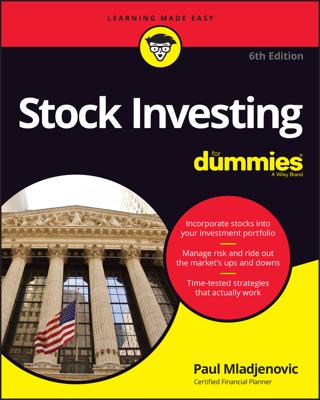A limit order is a very precise condition-related order implying that a limit exists either on the buy or the sell side of the stock transaction. You want to buy (or sell) only at a specified price. Period. Limit orders work well if you’re buying the stock, but they may not be good for you if you’re selling the stock. Here’s how they work in both instances:
When you’re buying: Just because you like a particular company and you want its stock doesn’t mean that you’re willing to pay the current market price.
Maybe you want to buy Kowalski, Inc., but the current market price of $20 per share isn’t acceptable to you. What do you do? You tell your broker, “Buy Kowalski with a limit order at $16” (or you can enter a limit order at the broker’s website). You have to specify whether it’s a day order or a GTC order.
What happens if the stock experiences great volatility? What if it drops to $16.01 and then suddenly drops to $15.95 on the next move? Nothing happens, actually, which you may be dismayed to hear. Because your order was limited to $16, it can be transacted only at $16 — no more and no less.
The only way for this particular trade to occur is if the stock rises back to $16. However, if the price keeps dropping, then your limit order isn’t transacted and may expire or be canceled.
When you’re selling: Limit orders are activated only when a stock hits a specific price. If you buy Kowalski, Inc., at $20 and you worry about a decline in the share price, you may decide to put in a limit order at $18. If you hear that Kowalski’s price is dropping, you may sigh and say, “I sure am glad I put in that limit order at $18!”
However, in a volatile market, the share price may leapfrog over your specified price. It could go from $18.01 to $17.99 and then continue its descent. Because the stock price never hit $18 on the mark, your stock isn’t sold. You may be sitting at home satisfied (mistakenly) that you played it smart, while your stock plummets to $15, $10, or worse! Having a stop-loss order in place is best.
Investors who aren’t in a hurry can use a limit order to try to get a better price when they decide to sell.
For example, maybe you own a stock whose price is at $50 and you want to sell, but you think that a short-term rally in the stock is imminent. In that case, you can use a limit order such as, “Sell the stock at the sell limit order of $55 and keep the order on for 30 days.”
When you’re buying (or selling) a stock, most brokers interpret the limit order as “buy (or sell) at this specific price or better.”
For example, presumably, if your limit order is to buy a stock at $10, you’ll be just as happy if your broker buys that stock at $9.95. That way, if you don’t get exactly $10 because the stock’s price was volatile, you’ll still get the stock at a lower price. Talk to your broker to be clear on the meaning of the limit order.

